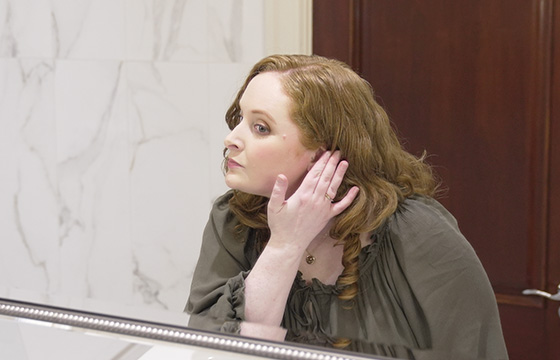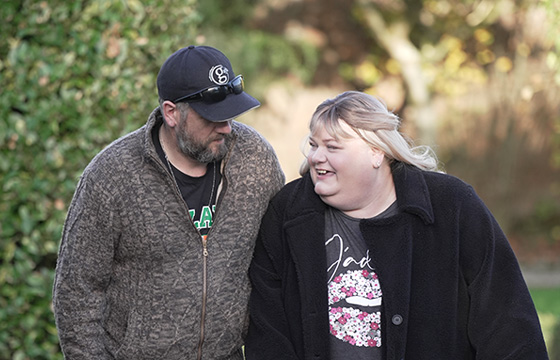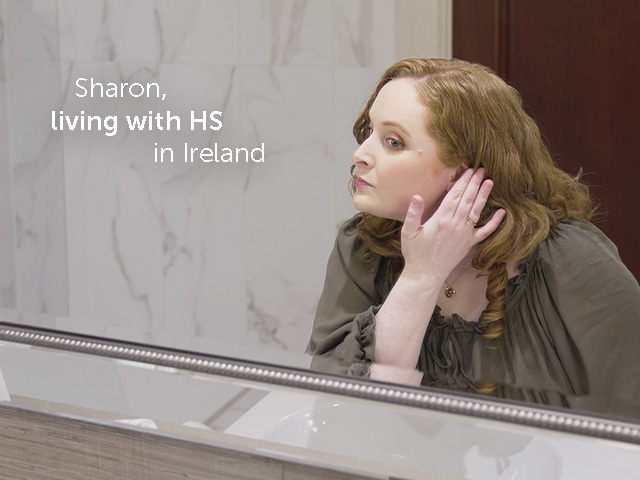These turn up in folded areas of skin (along with pus-filled spots and lumps), often starting in one place before they appear in another.
Symptoms of hidradenitis suppurativa
HS can be a very difficult condition to live with, as it causes painful lumps called abscesses to form under the skin. In severe cases, the abscesses become connected to form tunnels called sinus tracts. When abscesses and sinus tracts burst, they can leave scarring on the skin’s surface, which can limit your mobility and impact your quality of life.
The main symptoms of HS include:
Blackheads (open comedones)
Painful, pea-sized lumps
HS usually begins with small painful lumps under the skin that appear in one spot. These may disappear or break open and leak pus after a few hours or days. Other bumps may appear over time in the same location.
Leaking bumps or sores (abscesses)
Some of these lesions may remain and become larger and spread, forming abscesses. These are pus-filled and may also break open and drain pus, which sometimes has an unpleasant odour.
Tunnels (sinus tracts)
Sinus tracts are tunnels that form under the skin linking abscesses together that can leak pus. These usually require treatment.


Which parts of the body are affected by HS?
Hidradenitis suppurativa usually affects the areas of your skin that rub together and can be present in just one area or several areas.
The underarms are the most commonly affected areas, but HS can appear on any of the following:
- Underarms
- Groin
- Inner thighs
- Perianal and perineal areas (around the anus and genitals)
- The area underneath the breasts
- Buttocks
- Pubic area
- Vulva
- Scrotum
- Chest
- Scalp
- Behind the ears
- On the eyelids
The Hurley system
The most widely used tool for tracking the progression of HS is called the Hurley system, which uses three stages to classify the severity of your condition:
Stage I: (the mildest form of HS)
At this stage, there are single or multiple abscesses, but no widespread abscesses, sinus tracts or scarring.
Stage II:
At this stage, there are one or more widely separated abscesses that keep reappearing, along with some sinus tracts and scarring.
Stage III: (the most severe form of HS)
At this stage, there are several interconnected sinus tracts and abscesses spread throughout an entire area, leaving little to no uninvolved skin.


Diagnosing HS
There isn’t currently a specific test to diagnose HS. Your doctor will usually examine the affected skin and may take a sample for laboratory testing. An ultrasound can also help your doctor confirm a diagnosis.
“Having HS forces you to be your own advocate and stand up for yourself.”

Nicole, living with HS in Ireland
Getting diagnosed with HS can take a long time. It can take between 7 to 12 years to be correctly diagnosed with HS. This is because HS is not a common disease and can be mistaken for other conditions such as acne or ingrown hairs. Getting diagnosed and treated as early as possible is key to prevent HS from becoming severe or debilitating, so tell your dermatologist as soon as possible if you think you could have HS. Having HS can be frightening, but getting a diagnosis will allow you to take greater control of your condition.
You may need to see several different doctors and specialists over the course of your diagnosis to form a treatment plan, including your general practitioner, dermatologist, surgeon, paediatrician, nurse, psychologist and gynaecologist. Together, these medical specialists will form your healthcare team; your main point of reference should be a dermatologist specialised in HS.

What Causes Hidradenitis Suppurativa?
Learn about the causes and triggers of hidradenitis suppurativa.
Read more
How to Treat Hidradenitis Suppurativa
There is currently no cure for hidradenitis suppurativa but there are several treatments available to control HS and improve symptoms.
Read more
Living with Hidradenitis Suppurativa
Receiving a diagnosis of HS can be tough, but there is support available to help you live a happy and full life.
Read moreThe information provided on this website is not a substitute for professional medical care. If you have any concerns about your health or medicine, you should consult your healthcare specialist or general practitioner.
If you get any side effects, talk to your doctor, pharmacist or nurse. This includes any possible side effects not listed in the patient information leaflet. You can also report side effects directly in the UK via the Yellow Card Scheme website: https://yellowcard.mhra.gov.uk/ or via the the MHRA Yellow Card App in the Google Play or Apple App Store. In Ireland please report via the HPRA at https://www.hpra.ie/homepage/about-us/report-an-issue.
You can also report adverse events to UCB at UCBCares.UK@ucb.com or UCBCares.IE@ucb.com.

